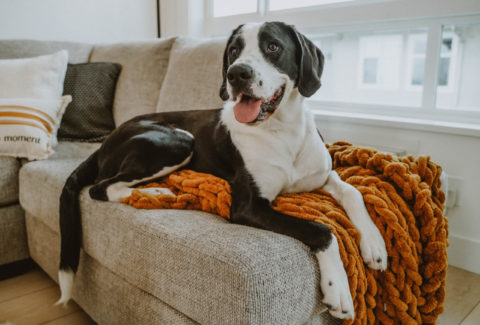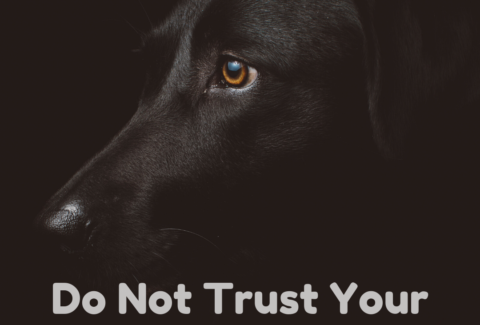Why are my German Shepherd’s ears floppy?
December 28, 2021 2021-12-28 4:06Why are my German Shepherd’s ears floppy?
German Shepherds have an instantly recognizable look; their black and tan coats, their distinct markings, and their pricked ears. Pricked ears are a part of the American Kennel Club’s standard for the breed, so, what does it mean if you’re German Shepherd’s ears are floppy?
Well, there are a few different possible explanations. Causes can vary from age-related to genetic and medical issues.
Let’s take a look at why your German Shepherd’s ears may be floppy, and when to do something about it.
Table of Contents
When do a German Shepherd’s ears stand up?
All puppies are born with soft, floppy ears. This is because the cartilage and muscles in their ears have not developed yet. They are also born with closed ears, meaning that they can’t yet hear anything. In fact, their ears don’t actually open to receive sound until around one week of age.
Although some breeds, like Spaniels and Poodles, always have floppy ears, others, like most Shepherd breeds, almost always have pointy, pricked, upright ones. In such breeds, their ears should start to stand up between 6-10 weeks of age as the bones and muscles in their bodies develop and strengthen. However, if they haven’t stood up by 8 months old, they’re probably not going to.
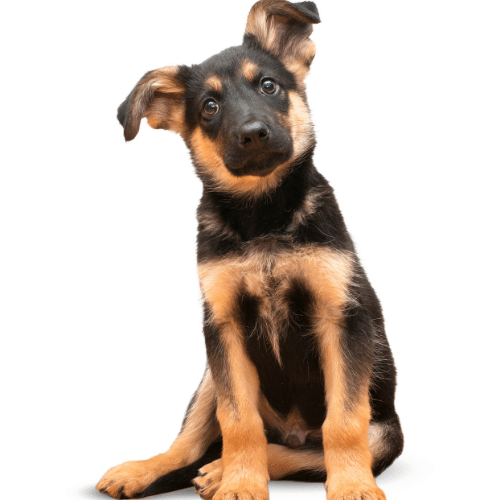
Why are my German Shepherd’s ears floppy?
Why your German Shepherd’s ears are floppy could depend on a few things – have they always been floppy, or have they suddenly flopped? Are they both floppy – or is only one of them drooping whilst the other stands up normally?
To start off, let’s explore some of the most common reasons for floppy ears during (or since) puppyhood in German Shepherds.
Teething
Several young puppies experience floppy ears during teething. Teething is a period that all infant mammals go through, in which their baby or milk teeth fall out and their adult teeth grow in. It starts at around three weeks old and ends at 4-6 months of age, although it can take longer.
During teething, a puppy’s mouth can require extra calcium to support the growth. So, their bodies may draw calcium out of other areas, such as the ears, weakening their skeletal structure and making them flop.
You may even notice that their ears look different every day during this period. They might be up-right one day, then floppy the next, or even change throughout the day depending on their mood. This is totally normal, and don’t worry, it’s only temporary. Their ears will return back to their original shape as soon as their hormones calm down.
Genetics
If your German Shepherd’s ears have always been floppy, it could just be their genetics. Although most German Shepherds have up-right ears, some can have floppy or semi-pricked ones. It is rare, but just like coat length, eye color, and coat color, a dog’s ear shape is also affected by their genetics.
Breeding
A German Shepherd’s ears can also be floppy due to their breeder’s practices. The American Kennel Club’s breed standard for German Shepherds states that their ears should be “moderately pointed, in proportion to the skull, open toward the front, and carried erect when at attention, the ideal carriage being one in which the center lines of the ears, viewed from the front, are parallel to each other and perpendicular to the ground”. Judges of dog shows and competitions also often look for large ears in the breed.
So, in order to sell “show-quality” pups, some breeders will try to breed German Shepherds with ears as large and pointy as possible, but sometimes, their ears get too big to hold themselves up, and so they end up flopping.
Poor nutrition during puppyhood
As mentioned above, calcium is needed to develop and strengthen the cartilage in the ears in order for them to stand up. Vitamin D is also needed to keep bones healthy and strong. If a dog was deficient in vitamin D and/or calcium as a pup, their ears may not develop properly, and they could flop permanently as a result. This is especially common in rescue dogs that come from puppy farms, homelessness, and neglectful backgrounds. (Always buy from reputable breeders!)
Other symptoms of calcium and vitamin D deficiencies include muscle spasms and joint issues. If severe, nutrient deficiencies can be deadly. Malnutrition, in general, can also be deadly and should be obviously identifiable by looking at a dog’s body in terms of weight – or lack thereof. Both conditions require urgent veterinary attention, and treatments will likely include special diets and supplements.
Poor hygiene during puppyhood
Another possible explanation for your German Shepherd’s floppy ears is an absence of hygiene in the past. Similar to malnutrition, this is common in dogs that come from a background of neglect or homelessness.
A build-up of wax, debris, or dirt can make the ears heavy and cause them to droop. When this occurs throughout a German Shepherd’s puppyhood, it can prevent the bones and muscles in their ears from developing properly, and they can flop permanently as a result.
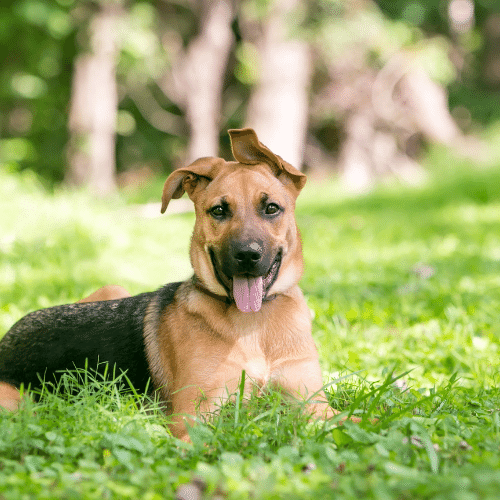
Why have my German Shepherd’s ears flopped suddenly?
If your German Shepherd’s ears have flopped suddenly after years of being up-right, it could, again, be related to poor hygiene or even a case of ear mites.
Poor hygiene
As we mentioned above, poor ear hygiene can lead to drooping of the ears. It can also lead to smelliness and infection. If your German Shepherd’s ears flop suddenly, you should consider your ear care routine.
Typically, dogs with upright ears such as German Shepherds don’t need regular ear care. It’s usually floppy-eared breeds like Beagles that need regular cleaning with topical solutions due to the “closed” nature of their ears, which makes them more prone to trapping dirt.
All dogs have self-cleaning mechanisms in their ears. However, allergies and hormone imbalances can cause disruptions to the mechanisms, meaning they require some extra care.
Dogs can be allergic to environmental allergens like pollen, household cleaning products, and foods like wheat and dairy. Other symptoms of allergies can include skin irritation, coughing, sneezing, runny noses and eyes, and stomach upsets. Common hormone imbalances in dogs include Cushing’s syndrome, pituitary dwarfism, diabetes, hypothyroidism, and Addison’s disease. Each has different symptoms, but they often include drastic changes in energy, coat, thirst, appetite, and weight. German Shepherds are also particularly prone to experiencing hormonal disorders.
Ear mites
Another cause of ear drooping in German Shepherds is ear mites. Ear mites can be picked up outdoors, or from coming into contact with another animal with the condition. The inflammation from the infestation can cause droopiness in the affected ear. Most often, however, ear mites affect both of a dog’s ears at the same time.
Other symptoms include excessive itchiness, and redness, bleeding, and swelling from the constant scratching. You can also usually see them inside the ears; they’re often described as looking like coffee grounds, and they can be treated with topical anti-parasitic medications. If left untreated, the infestation can cause disease, which can lead to hearing loss and balance issues.

Why is one of my German Shepherd’s ears floppy?
If only one of your German Shepherd’s ears is drooping, it could be caused by an infection or physical trauma.
Infection
Ear infections can be bacterial or fungal, and they can affect both the inner or outer ear. They are most often picked up after exposure to water, and the inflammation can cause the affected ear to droop.
Other symptoms can include redness, swelling, irritation, discharge, and excessive head shaking or scratching at the ear. Vets can treat ear infections with antibacterial or antifungal medications, but they need to be treated quickly before they spread or cause permanent damage.
Trauma
Physical trauma to the ears can also cause them to droop. The most common trauma that causes changes to the shape of the ears in German Shepherds are bites from fighting with other dogs. If your dog has a visible injury to their ear, you should take them to see their vet to check it over and dress any wounds to prevent infection.
How to care for your German Shepherd’s ears
To care for your German Shepherd’s ears, check them regularly for wax build-up and mites and clean them when they get dirty. You should make sure that their ears dry thoroughly whenever they get wet to prevent infections, and if they don’t air-dry before bedtime, gently dry them using a clean towel.
Make sure to brush your GSD regularly, also around the head and ears – these dogs shed heavily!
To clean your dog’s ears, buy some topical ear-cleaning solution. You can get these over-the-counter at your vet, online, or in a pet store. A popular home remedy for ear cleaning is a 50/50 mixture of water and white vinegar, which is a mild disinfectant and a strong deodorizer. You can also use a few drops of olive oil for wax build-up, but not too much.
To administer, get a towel and ask your dog to lie down in a comfortable place in the home. Hold your dog’s ears open and aim the dropper into the ear canal. Without touching their ears with the dropper, squeeze a few drops into them until they’re almost full of the solution. Then, massage the mase of their ears for around 30 seconds to help it loosen any wax or dirt. Finally, allow your dog to shake their head and use the towel to catch what comes out.
If there’s any remaining debris, use a clean cotton ball to gently wipe it away. Don’t go in further than the depth of a knuckle and don’t use a cotton swab, as you could hurt your dog.
You shouldn’t need to do this too regularly with your German Shepherd, just whenever their ears look like they need a good clean. That said, if they have particularly problem ears, you should ask your vet and do it however often they suggest, which could be weekly or monthly.
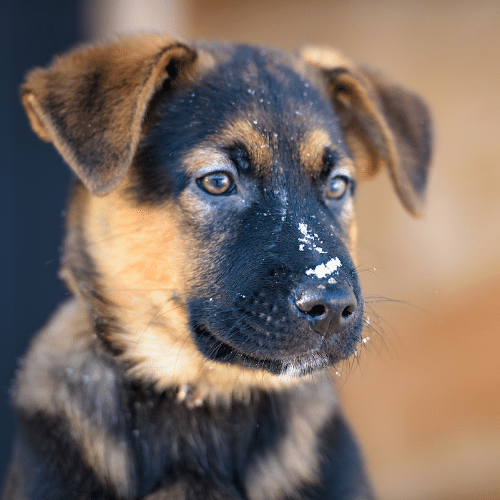
How can I fix my German Shepherd’s floppy ears?
First of all, if your German Shepherd’s ears are floppy – they don’t need fixing. As long as they are happy and healthy, that’s all that matters. However, if you really want to change your dog’s floppy ears and make them stand up straight, there are a few things that you can do.
Some owners have their dog’s floppy ears surgically cropped or implanted to make them stand up. However, this is very controversial. It is not yet illegal in the USA, but it is also not something that we would recommend outside of medical necessity, as it can be unnecessarily stressful and painful for dogs.
Owners can also “tape” their dog’s ears to make them stand upright. The method known as taping is done by placing something, usually tape, inside the ear to make it stand up straight and grow into that position permanently. It can be effective when done during puppyhood and usually takes 3-4 weeks to work. However, it doesn’t always work, and whilst it isn’t painful if done correctly, it can be annoying, stressful, and confusing for anxious pups.
How to make a German Shepherd’s ears stand up naturally
If your German Shepherd is still a puppy, you can encourage their ears to stand up naturally by feeding them well, providing good chew toys, and avoiding injuries.
As we mentioned above, nutritional deficiencies can cause the ears to flop. So, properly nourishing your dog’s entire body will ensure that everything works the way it’s supposed to – including their ears! If your dog’s ears are supposed to stand up, nourishing them with a natural and healthy diet will ensure that they do so.
Puppies should eat nutritionally complete and balanced food that is enriched with calcium, vitamin D, and DHA for healthy bone and brain development, as well as high-quality protein sources like chicken and fish for strong muscles, and tasty, fiber-rich fruits and veggies.
All puppies should have a handful of strong, hardy chew toys to avoid being destroyed during teething, but they can also help the ears to stand up. This is because the ears are connected to the jaw. So, strong jaw muscles means stronger ears, too! We highly recommend the pet brand Kong for their hardy rubber chew toys, as well as Outward Hound’s Invincibles line for some “invisible” – and cute – plush toys.
Finally, you should avoid playing too rough with your pup and interacting with boisterous dogs to prevent accidents and traumas, which, as we mentioned above, could damage or change the shape of their ears.
What does it mean when my German Shepherd’s ears go down?
Dogs communicate with us owners in many ways; they bark, they growl, and they use their bodies. Body language is a key part of understanding how your dog is feeling. Dogs use their entire bodies to communicate; including their tails, their eyes, and their ears!
When your German Shepherd’s ears are in their natural position, it means they are happy and/or relaxed. Most German Shepherd’s ears are permanently upright, but when they go particularly pointy, it may be a sign that your German Shepherd is feeling alert. This often happens when a suspicious stranger or an unknown or unfriendly dog is approaching, or when there is a strange noise inside the home.
When their ears go back or downwards, it could simply mean that they are listening, or it could indicate either excitement or anxiety. So, it’s important to pay attention to the situation that they’re reacting to and any other signs of emotion.
Excited dogs may whine, wag their tails very quickly, and run towards what they are excited about. This happens a lot when dogs are greeting a loved one. An anxious dog, on the other hand, may lower their head and cower their bodies away from what is causing their anxiety. If they are frightened, they may also tremble and whine, and if they are feeling angry or threatened, they may show their teeth and growl. This can happen when a dog is exposed to a phobia or an aggressive dog.

Will my German Shepherd mix’s ears stand up?
Crossbreeds have boomed in popularity in recent years due to their status as “designer dogs”. It can be difficult to determine exactly how a mixed dog will look. Breeds with totally different qualities will produce pups with characteristics from both parents, and there’s no way of guaranteeing exactly what the pup will inherit from each one. Different pups from the same litter can also present with different traits from their siblings.
That said, certain traits, like short hair, for example, are genetically dominant and therefore will be passed on over others, like long hair, which is genetically recessive. Dominant traits are those that require only one copy of a specific gene for the trait to be passed down to a pup. Recessive traits, on the other hand, need two copies; one from each parent.
However, just because a trait is passed on or carried, doesn’t necessarily guarantee that it will be physically present and visually identifiable in the pup. They could just carry it and pass it on to their own offspring, even though they don’t look as though they have it themselves. It’s uncommon, but it does happen!
So, which is dominant; pricked or floppy ears? The answer is – floppy ears! Floppy ears are genetically dominant to pricked ears in dogs. So, when predicting what your German Shepherd crossbreed’s ears will look like, look at their parents. Or, if you don’t know the parent dogs, consider the other breed in the mix.
For example, according to the German Shepherd website Shepped, some of the most popular German Shepherd crossbreeds of 2021 are Golden Shepherds (a German Shepherd/Golden Retriever mix) and Siberian Shepherds (a German Shepherd/Siberian Husky mix).
Golden Shepherds are more than likely to have floppy ears because the majority of Golden Retrievers have floppy ears, whereas Siberian Shepherds will almost certainly have pricked ears because Siberian Huskies’ ears are always pricked.
Can a dog’s ears affect their temperament?
No, the shape of a dog’s ears does not affect their temperament. It is well-known that some genetic physical traits can marginally affect a dog’s personality. For example, long-haired German Shepherds are generally known to be sweeter in temperament than short-haired ones and black German Shepherds are said to have “an edge” over other colors of the breed.
However, there is nothing to suggest that ear size, shape, or type affects a dog’s personality in any way – and nothing shapes a dog’s temperament more than the way that they are treated by humans.
That said, different ear shapes in dogs does tend to reflect their original working purpose. For example, the Spaniel, a gun dog, has floppy ears that gather and hold scent particles. This helped them track down what they were looking for much faster back in the day.
German Shepherds, on the other hand, along with other wolf-like breeds, such as the Siberian Husky, have pricked, pointed ears. This is thought to aid their hearing during guard work, keep their body temperature under control during strenuous hunts, and give them an alert look to ward off predators.
This may be why people are statistically more likely to perceive dogs with pricked ears as more threatening, according to research conducted by James Madison University, USA, in 2015. This is not necessarily true, however, as any dog lover will know. It is likely down to something old and instinctual, as they also discovered that people perceived coat colors differently, too.
Does ear shape affect a dog’s hearing?
The type of ears that a dog has can affect their hearing. More specifically, heavy, flopped ears that cover the canal can slightly muffle sound and lessen a dog’s hearing distance, but only marginally.
Whether a dog has pricked ears or floppy ears, they have 18 different muscles that control them to funnel sounds from all different directions. A healthy-hearing dog of any kind can still hear from 40 to 60,000 hertz, which is more than double what human ears can hear!
The bottom line
Whether your German Shepherd’s ears are pricked or floppy, so long as they are safe and loved, that’s all that matters.
However, if you are concerned about them, watch out for other signs of potential problems and ask your vet for a check-up if you’re worried.

Laura
Writer and Border Collie Mom
Laura is a dog-lover with an animal-related degree and plenty of hands on experience. She is passionate about dog health & welfare and wants to arm owners with all of the essential info they need!
Steffi Trott
Related Posts
Healthy Summer Treats That Are Safe for Your Dog
What You Need To Know About Joint Health In Dogs
Choosing the right food for your small breed dog
Do Not Trust Your Aggressive Dog
Is It Ever Too Late To Start Training A Dog?
Signs That Your Dog Might Be Sad
10 Times Your Dog Was Not Misbehaving On Purpose
What is the oldest age a dog can have puppies?
Check out our effective and affordable online dog training courses!
-
Sale Product on sale
 Tackling Reactivity Bundle
Tackling Reactivity Bundle
MONEY BACK GUARANTEE$564.00$49.00 -
Sale Product on sale
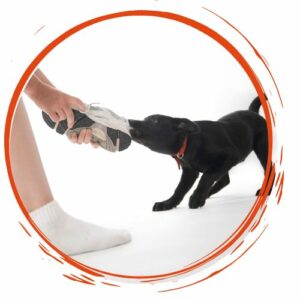 Perfect Obedience Bundle
Perfect Obedience Bundle
MONEY BACK GUARANTEE$349.00$49.00 -
Sale Product on sale
 Ultimate Puppy Bundle
Ultimate Puppy Bundle
MONEY BACK GUARANTEE$416.00$49.00 -
Sale Product on sale
 The Perfect Focus Bundle
The Perfect Focus Bundle
MONEY BACK GUARANTEE$445.00$169.00 -
Sale Product on sale
 Ultimate Masterclass Bundle
Ultimate Masterclass Bundle
MONEY BACK GUARANTEE$2,213.00$499.00


